Utilizing transmitted illumination to observe burrs and foreign objects within apertures.
We often receive requests to inspect burrs and foreign objects inside holes using transmitted illumination.
When the target object has a certain “thickness,” a bit of technique is required.
We conducted an examination by creating a hole with a diameter of φ5mm in a 12mm-thick aluminum plate and capturing images.
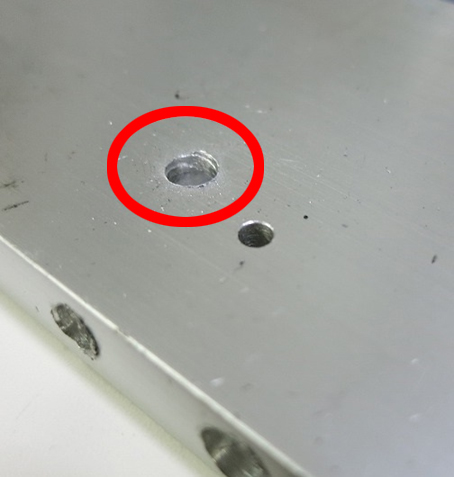
The upper, middle, and bottom surfaces in the above image have foreign objects adhered to them.
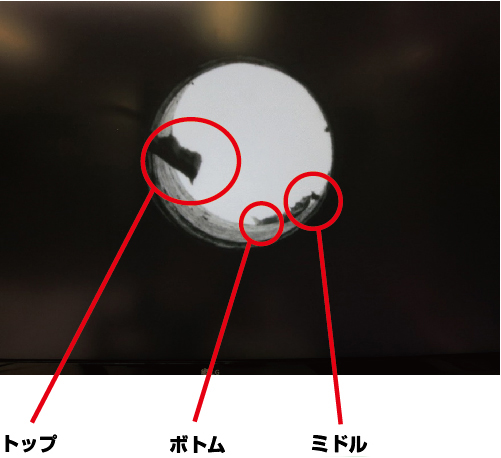
To detect all of these, the use of a lens with aperture control is necessary.
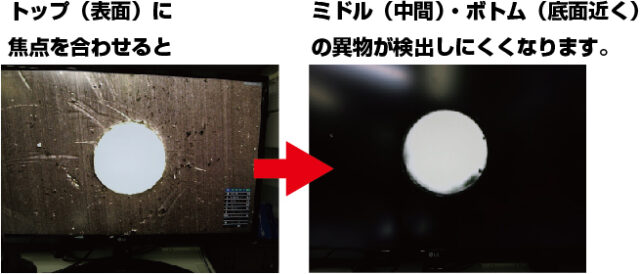
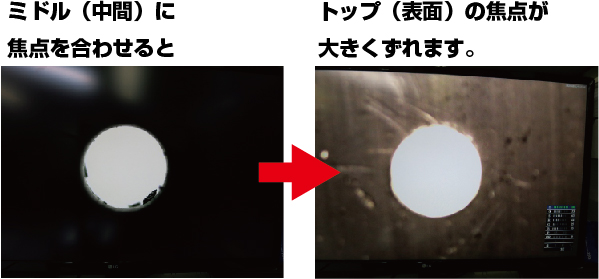
■ When using an open-aperture lens
Observing the top surface with the lens opened and focused yields the following results.

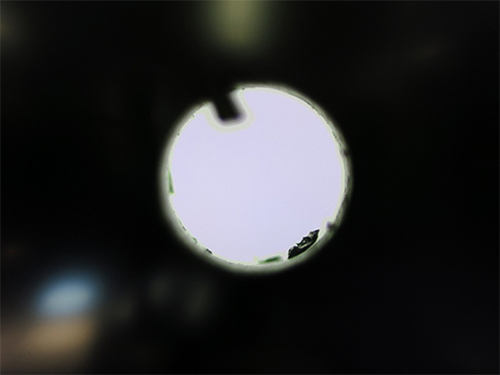
*The top is visible but appears slender, while the bottom is in a highly indistinct state.
■When employing a macro lens with aperture control…
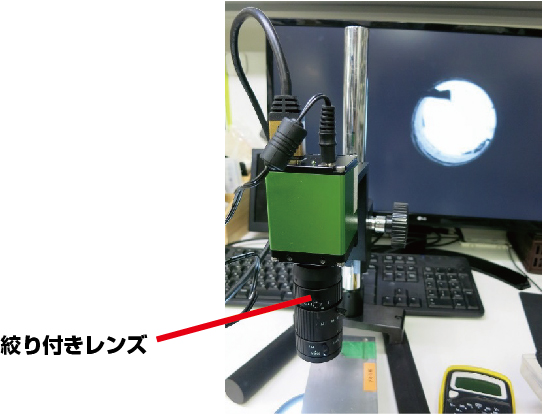
Capture the image with the aperture narrowed as much as possible.
(Compensate for the resulting darkness with additional illumination, and keep the camera gain around 90% rather than at its maximum.)
*Both the top (surface) and middle (interior) as well as the bottom (near the base) can be adequately observed.
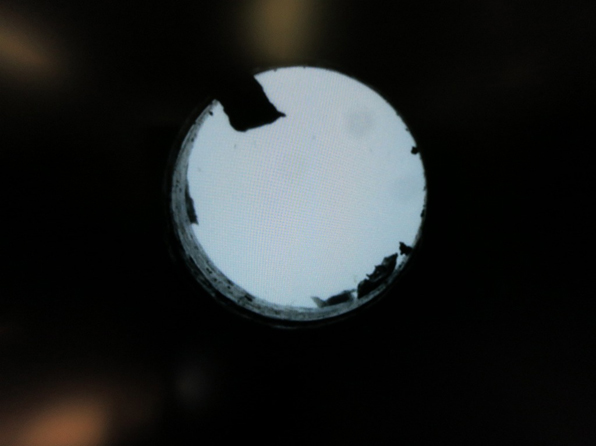
- In conclusion,
To observe burrs and foreign objects within the hole, it is essential not only to use transmitted illumination but also a lens with aperture control that can deepen the depth of field.



